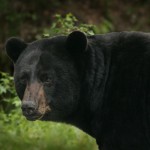
Although Asian bear species are the most geographically convenient targets for bear bile used in traditional Chinese medicine, the illegal trade is alive and well in North America — and has been for quite some time.
Recent developments in the U.S. include the June 2012 signing of House Bill 2296 by Hawaii Governor Neil Abercrombie, which will prohibit the “purchase, sale, transportation and delivery of any item containing bear bile or gallbladders”.
And in 2011, New York joined a growing global movement to stop the plundering of bears for traditional Chinese medicines by enacting a law that prohibits the sale and transport of bear gallbladders.
But despite an increase in domestic laws (which can vary from state to state) designed to prevent trafficking of bear parts, there seems to be no shortage of people willing to cash in on the illegal trade.
For example, a Virginia resident recently plead guilty to killing bears and selling their gallbladders on the black market.
Even National Geographic’s Wild Justice has featured episodes about American hunters involved in bear gallbladder trafficking (see video below).
However, the targeting of North American bears — even polar bears — for their gallbladders is not a new issue.
In 2000, WPSA published the findings of their investigation in From Cage to Consumer: An investigation into the illegal sale of Chinese bear bile and bear gall products in North America, in which they surveyed traditional Chinese medicine shops in the U.S. and Canada.
Researchers concluded that “the demands of the Chinese traditional medicine market for bear gall and other bear products has caused poachers to look to American black bears, brown bears and polar bears to meet the demands of the bear parts market” and “the sale of bile from bear farms in China would not decrease the demand for bear galls from the wild”.
One shop told the investigator the gall was from a wild caught polar bear and was called “Golden-silk polar bear gall”.
The following year, Paul C. Lin-Easton wrote in the Asia-Pacific Law & Policy Journal that wildlife officials in the U.S. have been “finding dead bears in national parks with their gall bladders cut out and their paws chopped off” since the 1980s.
At that time, it was estimated that 40,000 bears were being killed illegally in North America for their gallbladders and paws.
He wrote that “Ultimately, those countries with the greatest demand for bear parts do not have much enthusiasm for fighting the ancient cultural practices and beliefs that support the bear trade.”
Bear bile IPO
Today, the demand for bear parts (or at least the desire to profit from bear parts) seems undiminished: In February 2012, Guizhentang Pharmaceutical Co. Ltd. — a company involved primarily in the bear bile business — was seeking IPO approval.
Fortunately, the company’s previous IPO attempt in February 2011 failed amid strong opposition inside and outside of China.
No need for bear bile
There is absolutely no reason to use “ingredients” sourced from bears.
The active ingredient in bear bile, ursodeoxycholic acid (UDCA), is available as a synthetic and there are at least 50 herbal alternatives to bear bile.
Image by Cephas via Wikimedia Commons
Sources:
Paul C. Lin-Easton, Ending the Siege on America’s Bears: Implementing GATT-Consistent Pelly Sanctions Against Bear-Trading Nations, 2 Asian-Pac. L. & Pol’y J. 7 (2001), at 202.
Hsieh Yi, From Cage to Consumer: An investigation into the illegal sale of Chinese bear bile and bear gall products in North America, World Society for the Protection of Animals (2000)




